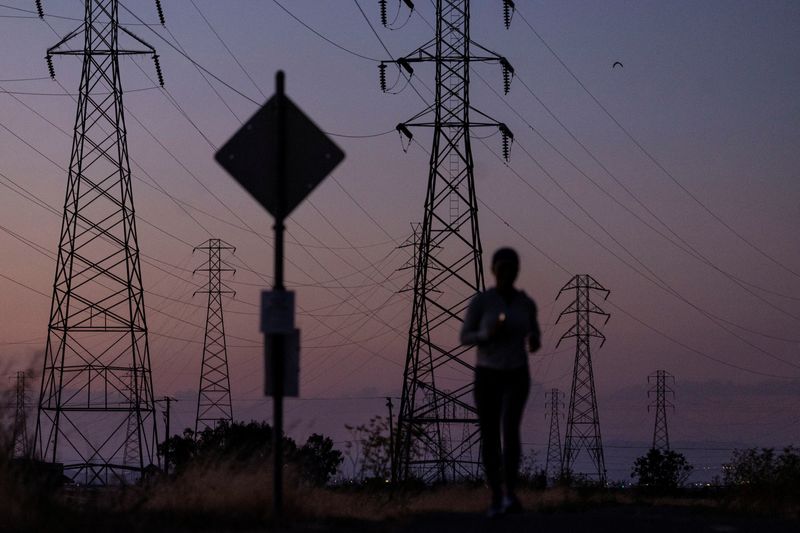California grid operator signs off on $7.3 billion of power lines
2023.05.19 19:04

© Reuters. FILE PHOTO: A woman jogs by power lines, as California’s grid operator urged the state’s 40 million people to ratchet down the use of electricity in homes and businesses as a wave of extreme heat settled over much of the state, in Mountain View, Californi
(Reuters) – California’s electric grid operator has approved a plan expected to cost $7.3 billion for 45 new power transmission projects over the next decade and made it easier for new power plants in high-priority areas to connect to the grid.
The projects will support the development of more than 40 gigawatts (GW) of new generation resources, the California Independent System Operator (CAISO) said on Thursday.
“With electrification increasing in other sectors of the economy, most notably transportation and the building industry, even more new power will be required in the years ahead,” the CAISO said.
The vast majority of the transmission projects will be built in California, with some in neighboring Arizona, it said.
The power lines recommended by CAISO’s 2022-2023 Transmission Plan will allow the state’s grid to add more than 17 GW of solar resources, 8 GW of wind generation, 1 GW of geothermal development, and battery storage projects.
CAISO will prioritize connecting power plants to the grid in specific geographical zones identified by its plan where developing new power lines and plants “make the most economic and operational sense.”
The grid operator also approved proposed reforms to account for “increasing levels of net load forecast uncertainty between day-ahead and real-time markets … as the generation fleet evolves towards a cleaner, but more variable, resource mix.”
It projected that its transmission plan next year could include the need to add 70 GW of new power to the grid by 2033, rising to 120 GW as the state seeks to meet its goal of a carbon-free power system by 2045.
Power supply in the U.S. West is vulnerable to extreme heat as it relies on regional energy transfers to meet demand at peak or when solar output is diminished, the North American Electric Reliability Corp (NERC) said in its summer outlook on Wednesday.







